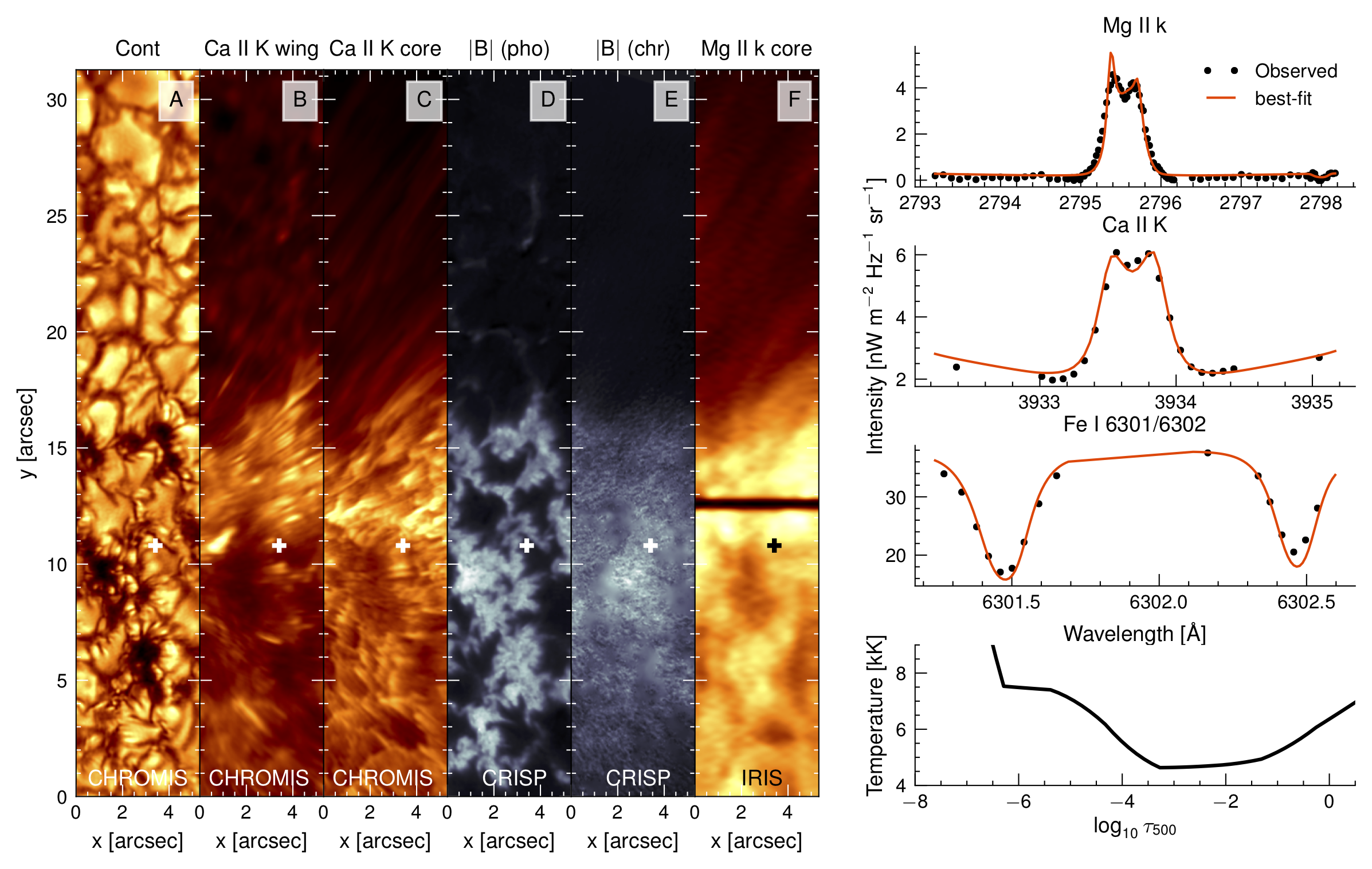The chromosphere is the interface layer that connects the few-thousand-degree-Kelvin photosphere to the million-degree corona. It is the key to understand the mechanisms that transport and release sufficient energy to power the hot corona. The chromosphere requires about 10 times more energy than the corona in order to sustain itself. Hydrodynamic processes alone are not enough to heat it: magnetic fields are required to transfer energy into, and dissipate energy in, the chromosphere. Chromospheric heating is particularly strong in active regions with a strong magnetic field, where a great excess of radiative cooling (brightness) is observed. The mechanisms that convert the magnetic energy into thermal energy are still poorly understood.
Our ISSI team aims to identify the processes that lead to chromospheric heating in magnetically active regions and flares using observations taken with the foremost space-borne (NASA’s Interface Region Imaging Spectrograph, IRIS) and ground based (the Swedish 1-m Solar Telescope, SST and the Atacama Large Millimeter/submillimeter Array, ALMA) telescopes, as well as numerical simulations.
To do so we will derive time-dependent 3D empirical models from the observations using advanced non-LTE inversion techniques. We will then analyze the spatio-temporal distribution of the physical parameters such as magnetic field, temperature and velocity. This allows the identification and characterization of the heating events. We will then compare the signatures of these events with theoretical models and advanced radiative 3D MHD simulations, and so constrain the heating mechanisms that act in the chromosphere.

